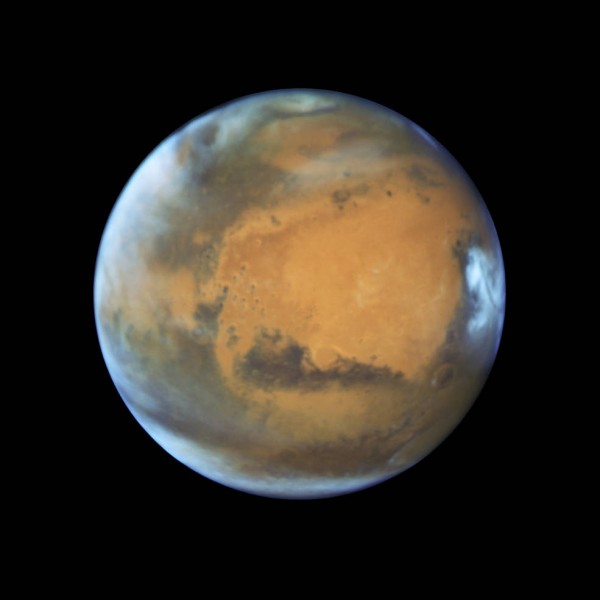See Mars Tonight on its Closest Approach to Earth in 11 Years
| Ana Verayo | | May 30, 2016 07:06 AM EDT |
(Photo : NASA, ESA, the Hubble Heritage Team (STScI/AURA), J. Bell (ASU), and M. Wolff (Space Science Institute)) Hubble Space Telescope photo of Mars taken when the planet was 50 million miles from Earth on May 12, 2016.
This year, Mars appears its brightest in the night sky, beginning from May 18 to June 3. Today, May 30, Mars will be at its closest approach with our planet, about 46.8 million miles away, which is also the closest distance ever between Mars and Earth in 11 years, since October 5, 2005.
Like Us on Facebook
Today, Mars will be so close to Earth but not too close though, as an amateur telescope can only see so little, such as a faint polar cap or dusty swathes of clouds on the Red Planet. However, astronomers using ground observatories and powerful space telescopes such as the Hubble Space Telescope will take advantage of this event, where they will study the dark areas of the dusty planet which are the Mare Erythraeum and Solis Lacus, which are named after seas and lakes on the moon as imaginary bodies of water on the otherwise arid world.
Back in 2003, Mars was so close to Earth, the closest ever in 60,000 years which will not happen again until 2287. Why is this so? Both Earth and Mars do not have perfect circular orbits which means that there is a certain tug of war between the planets with their gravitational forces that shape their orbits. Since Mars is nearer to Jupiter, Jupiter possesses a stronger effect on Mars than Earth towards Mars.
The next closest approach of Mars to Earth will be in July 31, 2018 which will be even more close than today's.
These closest approaches have a pattern though, as they happen every 26 months during a time when Mars and Earth are the closest. During this time, NASA mission scientists also launch space missions to Mars to cut down on space travel, taking advantage of this shorter distance.
Almost every night, skywatchers can see Mars as a bright reddish star with a steady light, that does not twinkle. At nightfall, Mars is seen on the eastern sky and and high in the sky during midnight, and in the western sky just before dawn. Mars will rise today at 10:15 P.M. EDT and will disappear in the early dawn sky.
Tagsmars earth, mars closest approach earth, Mars, Earth, mars closest approach
©2015 Chinatopix All rights reserved. Do not reproduce without permission
EDITOR'S PICKS
-

Did the Trump administration just announce plans for a trade war with ‘hostile’ China and Russia?
-

US Senate passes Taiwan travel bill slammed by China
-

As Yan Sihong’s family grieves, here are other Chinese students who went missing abroad. Some have never been found
-

Beijing blasts Western critics who ‘smear China’ with the term sharp power
-

China Envoy Seeks to Defuse Tensions With U.S. as a Trade War Brews
-

Singapore's Deputy PM Provides Bitcoin Vote of Confidence Amid China's Blanket Bans
-

China warns investors over risks in overseas virtual currency trading
-

Chinese government most trustworthy: survey
-

Kashima Antlers On Course For Back-To-Back Titles
MOST POPULAR
LATEST NEWS
Zhou Yongkang: China's Former Security Chief Sentenced to Life in Prison

China's former Chief of the Ministry of Public Security, Zhou Yongkang, has been given a life sentence after he was found guilty of abusing his office, bribery and deliberately ... Full Article
TRENDING STORY

China Pork Prices Expected to Stabilize As The Supplies Recover

Elephone P9000 Smartphone is now on Sale on Amazon India

There's a Big Chance Cliffhangers Won't Still Be Resolved When Grey's Anatomy Season 13 Returns

Supreme Court Ruled on Samsung vs Apple Dispute for Patent Infringement

Microsoft Surface Pro 5 Rumors and Release Date: What is the Latest?










